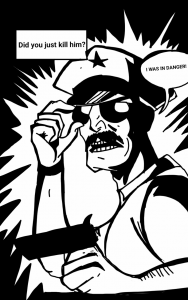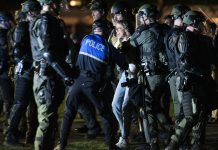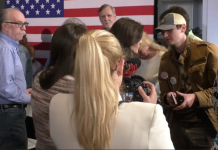In 2014, over 1,000 people were killed by police officers, followed by another 1,186 people killed in 2015, according to The Guardian. We are currently in the 10th month of 2016, and already 800 people have been killed by the police, with modest projections that estimate the death toll will be well over 1,000 people for 2016, according to The Washington Post.
In 2012, a 17 year old young man was shot and killed by a neighborhood watch volunteer. His name was Trayvon Martin. Since that time, there have been many others who have been slain by the police and other law enforcement agents. Protests have raged and anger has filled the hearts and minds of many throughout the country who are simply asking the question, ”Why are they killing us?”
Now, while thousands have been killed as a result of police violence, the majority of the victims are people that we never even hear about; the majority of the death related incidents go unseen by the public. There is no way to know for sure whether or not the victim posed a kind of threat that would warrant deadly force, but when we examine the cases of police violence that have been video recorded and that have stirred the most controversy, one obvious point stands out; the police overreacted. Furthermore, it is also clear that the police issued a level of force that was either unwarranted or was completely disproportionate to the amount of force shown to them by the victim.
It doesn’t matter which of the controversial cases is scrutinized, the trend of unwarranted force stands true in all the cases.
To make the point a bit clearer, here are but a few of the more controversial cases:
Unarmed Deaths
In 2012, Trayvon Martin was shot and killed by a neighborhood watch volunteer. Mother Jones reports that Martin, who was only a teenager, was confronted by the neighborhood watch volunteer because he appeared to be “suspicious” and “up to no good.” But within minutes of the confrontation, a scuffle unfolded, and the Martin was shot dead in the street. Martin was unarmed, and was on his way home from the 7 Eleven convenient store where he had purchased an iced tea and a bag of Skittles.
The New York Times reports that in 2014, Mike Brown was shot 6 times and killed after being confronted by a police officer who suspected Brown of a convenient store robbery. Brown, a teenager, with no weapon on him at all, was involved in a physical altercation, which was soon followed by the police officer gunning him down to his death.
Also in 2014, Tamir Rice was shot by a police officer and killed. Rice was 12 years old and was playing with a toy replica pistol on a public playground. According to The Washington Post, after receiving phone calls about a black man carrying a gun around and threatening people, the police investigated, and within minutes of arriving on the scene, a police officer fired his weapon. Rice was reported to be in the process of reaching into his pocket when confronted by the police.
Another deadly incident occurred in 2014, involving a man named Eric Garner. The deadly event transpired after Garner was confronted by the police for selling loose cigarettes on the street. After struggling with the police, Garner was surrounded by a total of at least eight police officers who tackled him, forced him to the ground and administered an illegal choke hold around his neck, according to The Guardian. One hour later, Garner was announced dead at a local hospital.
One of the most horrific police shootings occurred in 2015, involving a police officer who shot a man in the back as he fled from the scene. The NBC News reports that Walter Scott was pulled over by a police officer for driving a vehicle with a malfunctioning brake light. After running away from the police officer, Scott was gunned down and killed.
These are but a few of the many cases involving a police shooting, but in all of these cases, a common trend emerges. In all of these cases, a police officer initiates aggression and a physical altercation. In all of these cases, the police have a physical advantage over the victim; either the victim is completely outnumbered by the police, the victim is much younger than the police officers, or the victim is unarmed and is up against a police officer who has a weapon. In all of these cases, the victim is either suspected or accused of committing the most minor of crimes; whether the victim is selling cigarettes, holding a toy gun, walking in a neighborhood that is predominately white, or running from the police, the crime committed is undeserving of the severe intensity of the police response. In all the cases, death has been the outcome.
Even in cases where the victim is armed, there are obvious signs of unwarranted and unnecessary force.
Armed Deaths
In 2014, 17 year old Laquan McDonald was shot and killed by a police officer. McDonald was suspected of a minor crime and was confronted by the police. After several police cars surrounded him, McDonald, who was carrying a pocketknife and was intoxicated, began walking down the street away from the police officers. NPR reports that while walking away, McDonald was shot 16 times by a police officer who stood more than 10 ft away from him. Even while laying on the ground, the police officer continued to fire his weapon.
In July of this year, Alton Sterling was selling CDs that he had made in front of a convenience store. After it was reported that Sterling had threatened some pedestrians, the police investigated and confronted Sterling. After a physical altercation unfolded, two police officers wrestled Sterling to the ground, held him there, shot him, and killed him, according to The Daily Beast. Although Sterling was armed, he never grabbed his pistol, he never made any attempt to harm the police officers, and he never pointed his weapon at the officers.
Within one day of the Alton Sterling killing, Philando Castile was shot and killed by a police officer. The shooting followed after Castile’s fiancé was pulled over during a routine police traffic stop. Castile, who was sitting in the passenger seat and who had a legal permit to carry a firearm, informed the police officer that he was carrying a weapon.
The New York Times reports that after requesting an identification card from both Castile and his fiancé, Castile reached into his pocket to grab his wallet, but before he could grab it, the police officer fired his gun and killed him.
Aftermath and Response
While the cases are certainly horrific and unfathomable, their occurrence was far from unavoidable. While it is clear that the police must respond more seriously to suspects that are armed and pose a deadly threat to those around them, it is certainly more clear that neither McDonald, Sterling, or Castile posed the kind of threat that is deserving of the deadly force that they received. Again, a common theme runs through all of these cases of deadly police action, the victim was guilty of committing a very minor offense or committed no crime at all.

As of right now, the country has been overwhelmed with protests. In Ferguson Missouri, Baltimore Maryland, and Charlotte North Carolina, police violence has sparked huge protests that involve peaceful protests, riots, clashes with the police, and hundreds of police arrests. The Black Lives Matter movement has gone from being nothing but a hashtag used on Twitter to becoming a nationally recognized symbol.
The country burns with racial tension.
In the midst of this racial tension, we as a nation of people, have directed our attention only on the black victims of police violence and have paid no attention to the hundreds of white victims that have been killed by the police. We have given into the temptation to see police violence as only a race problem, while ignoring the reality of a much greater problem.
In 2015, 1186 people were killed by the police. Out of those 1186 people, according to The Washington Post, over 50% were white and only 26% were black. There were almost twice as many white victims who were killed by the police than there were black. At the same time, while there are more white victims of police violence than there were black victims, The L.A. Times reports that blacks are 3 times more likely to be shot and killed by the police than whites. The reason for this is simple, whites make up more than 60% of the population while blacks only make up 12%, according to the U.S. Census Bureau. But even when the ratios are taken into consideration, it is still obvious that there are hundreds of white victims that die every year from police violence.
But a bigger issue calls our attention. An issue that is far greater than one about race.
An issue concerning the very fabric of our justice system is calling out for us to observe.
Police work requires that a person suspected of a crime actually gets arrested and detained safely. Without proper arrest, confirmation cannot be made regarding whether or not the suspect actually committed the crime that he/she is accused of. This is how the justice system works; there is an assumption of innocence given to those that are arrested. Police work does not require the killing of a suspect. To the contrary, it requires the opposite. In fact, when the detaining of a suspect goes bad, and the police are compelled to use deadly force, the police are actually not performing their job; their job is to arrest and detain.
The process goes something like this: someone is accused of a crime, or someone is suspected of committing a crime either through observance or some other way; the police are called to the scene in order to investigate, in order to see if there is enough evidence, or reason to believe, that a crime is actually being committed. If there is reason to believe that a crime is being committed, then the police are responsible for arresting and detaining the person suspected of the crime. In order for this to go the right way, the police have to confirm that the suspect is actually the person that committed the supposed crime. After this is confirmed, the police have to detain and arrest the suspect so that the process of justice can proceed. At this point, it’s imperative that the assumption of innocence is still maintained. When the suspect is detained and brought to a holding cell, the suspect has to be charged with the crime that he/she is being suspected for. If the suspect is indeed charged with the crime that he/she is suspected for, then the suspect becomes a defendant and will be prosecuted in court to determine innocence or guilt by a jury of his/her peers.
This justice process is the best process known to mankind. The reason why it is so successful is because it rarely convicts or punishes a person who has committed no crime.
But currently, there’s a problem.
The justice process is not being activated for many of those who are suspected of a crime and confronted by the police. The first stage of justice, where the police are called upon to investigate, arrest, and detain a person suspected of a crime, is going horribly wrong. This is perhaps the most important part of the justice process because it is the stage which jumps starts the whole system. If the police don’t execute their task of investigating, arresting, and detaining, then the whole system and process of justice completely collapses right then and there.
When the police fail to fulfill their role of arresting a suspect of a crime, they are essentially jeopardizing our system of justice that is guaranteed to all Americans.
Essentially, when the police inflict any kind of harm on a suspect, they are acting in an inappropriate manner; they are acting as judge and jury. When the police kill a suspect, they are acting as an executioner. Further, when the police fail to fulfill their role of arresting, and instead proceed to hurt or kill the detainee, they are positioning themselves above a system of justice that demands an assumption of innocence, a speedy trial, and a decision made by a jury of his/her peers.
When the policing authorities killed Trayvon Martin, Mike Brown, Tamir Rice, Eric Garner, Walter Scott, Laquan McDonald, Alton Sterling, and Philando Castile, they failed to perform the role assigned to them, and in this failure, they collapsed the system of justice for their victims and placed the survival of that system in jeopardy for all Americans.
This is why an incident involving a police killing of a suspect is so serious, because it involves much more than an issue concerning the job performance of the police who are called to the scene, it involves a realization that our system of justice is being paralyzed.
So what is at the root of police failing to perform their duty? Certainly factors related to race must be considered, for the likelihood of getting killed by a police officer is 3 times greater for blacks than it is for whites. But as noted already, the discussion cannot stop here, for out of the 1186 people killed by the police last year, over 50% of them were white.
The issues go much deeper. In most of the cases of police violence caught on video, the police officers involved display aggression, tension, insensibility, and fear. The police are seen with their guns drawn on unarmed people. The police are seen yelling frantically. The police appear to be far from calm, and are very nervous. Before a problem even emerges, the police are already acting in a defensive and hostile manner.
The combination of fear and aggression never results in a positive outcome. But this is exactly what we see when we watch a police officer gun down someone who is clearly not a threat to anyone around them.
Consequently, if the police problem in America is going to be fixed, entire system of policing is going to have to be dramatically redirected. The standards for becoming a police officer should be universally high throughout the entire country. It should not be easy to become a police officer. A thorough psychological and emotional test should be administered on all those who apply for becoming a police officer, and anyone who at all shows signs of mental or emotional instability should be disqualified from becoming a police officer. The training techniques need to be re-evaluated with an intense emphasis placed on keeping presence of mind, demonstrating restraint, resisting physical altercation, not over-reacting, and most importantly, only pulling a gun when the police officer is attacked by someone who has a weapon capable of deadly force. If a gun is used in any non-life threatening incidents, a police officer should be fired immediately.
The mindset has to completely change. Police officers need to know that they are tasked with fulfilling an extremely important role within a system of justice. A police officer’s job is not to take down the enemy. Instead a police officer’s job is to initiate a justice process. Using violence towards those that are deserving of only being arrested and detained is a violation of a police officer’s job description. Until police officers begin to see themselves as part of a system of justice that is much greater than themselves, then police violence towards American citizens will continue to be the epidemic that it is.




















